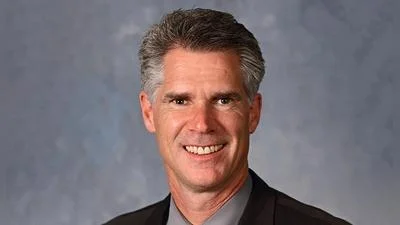University of Illinois Extension | news.illinois.ed
University of Illinois Extension | news.illinois.ed
Are TV sports networks game-changers for financing collegiate athletics?
Are campuses subsidizing their athletic programs in forms other than direct allocations?
Delaney: We looked at three distinct types of subsidies – direct subsidies, which involve actual money moving between parts of the universities; student fees; and indirect subsidies, such as groundskeeping crews that mow the quad also mowing the football stadium. These subsidies are common and generally relate to facilities maintenance or landscaping where having a separate staff doesn’t make economic sense.
But these subsidies often are not recognized in the athletic department’s spending. The department may be getting grounds maintenance for free because the campus is paying the grounds crew’s salaries and has historically done so. The amount of subsidization shifts between which sport is in season but tends to remain constant across years.
Your study describes an ongoing controversy on some campuses about subsidizing athletics. Why the controversy?
Delaney: Most athletic programs don’t break even. They’re subsidized by their campuses, some by direct student fees. And there have been large controversies about this issue – often raised by the faculty – that state general appropriations and tuition revenues should be used for instructional purposes. Two of the most notable controversies were at the University of California, Berkeley and Rutgers University.
On average, how much cross-subsidization is directed toward athletics?
Kearney: It varies dramatically by institution. Typically, universities with smaller athletic programs rely on institutional subsidies for a larger percentage of their athletic budgets, and the bigger schools tend to have a much smaller portion of their athletic budget coming from the institution.
Why are athletic programs not breaking even if they’re receiving revenue from TV contracts as well as from ticket sales?
Delaney: There’s this myth that college sports raise a lot of revenue and are self-sustaining. And while it’s true they raise a lot of revenue, they also spend a lot of money, and it’s rare that they are self-sustaining. According to National Collegiate Athletic Association data, only 14 institutions reported a net subsidy of zero in 2016-17.
In most athletic programs, the only two sports that typically make any money – men’s football and basketball – are used to finance all the rest. But it’s not enough revenue to support the entire athletic program, and the campuses are often called upon to subsidize the gap.
The NCAA has rules about the minimum number of sports campuses have to offer to be part of a particular division, so there’s pressure to field many sports. There’s also pressure from Title IX to ensure gender equity.
At the U. of I., we are not self-sustaining. We send direct subsidies to athletics. There’s also a required student fee that annually supports the athletic department.
How has the introduction of TV networks such as the Big Ten Network affected institutional subsidies for athletics?
Kearney: As the conferences signed lucrative TV network deals and passed these new revenues on to member schools, they tended to decrease the amount of subsidy flowing to their athletic departments. Our study was focused on Power Five conferences, which host most of the dedicated TV networks.
We found this evidence in the larger athletic programs.
What is the athletic arms race and how does it affect spending?
Delaney: Athletic departments face pressure to continuously invest in athletics to remain competitive with peer institutions, creating an “arms race.” Campuses always want more, newer and better for their athletes to move these programs forward.
Often this can be seen in the development of athletic facilities like a big new football practice facility or state-of-the-art equipment. Once an investment is made on one campus, other institutions feel the need to upgrade to keep pace.
It helps in recruiting athletes, but it’s also hard to know when there’s enough, since arms races create an insatiable appetite for more spending. I think it would take an outside force like the NCAA or Congress pushing institutions to put a brake on those competitive pressures.
Did any of your findings surprise you?
Delaney: The large TV contracts clearly provide revenue. It is a sudden windfall. I expected there might be enough money coming in from the TV networks that sports would no longer need to be subsidized.
The data did show a reduction, but the subsidies were not eliminated. Joining a college sports TV network seems to increase the overall spending on athletics.
Some sources are predicting huge revenues for the athletic conferences from the media rights associated with the expansion of the College Football Playoff. Could this be a game-changer?
Kearney: It’s possible. There are certainly expected increases in athletic revenues specifically related to the CFP expansion and the media rights; we’ll have to see how they ultimately get used.
There have been discussions recently – by the Knight Commission on Intercollegiate Athletics and others – about how these revenues should be used. It could alleviate some of the demand for institutional resources for athletics, similar to our findings related to dedicated TV networks, and possibly provide opportunities for athletic programs to contribute financial resources back to the institution.
Original source can be found here





 Alerts Sign-up
Alerts Sign-up